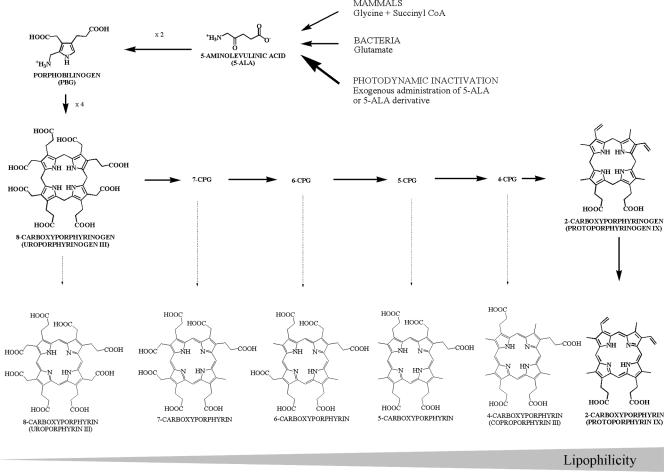FIG. 1.
Heme biosynthesis cycle. In mammalian cells, 5-ALA is formed from the condensation of glycine and succinyl coenzyme A (CoA), while most bacteria use glutamate as the substrate. Two molecules of 5-ALA condense to form porphobilinogen, catalyzed by 5-ALA dehydratase. Four molecules of porphobilinogen then condense to form a linear tetrapyrrole, which cyclizes to form 8-carboxyporphyrinogen (uroporphyrinogens I and III). Plants and bacteria can use uroporphyrinogen III as an intermediate in the synthesis of various molecules (e.g., chlorophyll and vitamin B12). Mammals exclusively use PPIX, obtained after numerous enzymatic decarboxylations and desaturations, while different CPs (8-CP, 7-CP, 6-CP, 5-CP, 4-CP) can be found in bacteria.

